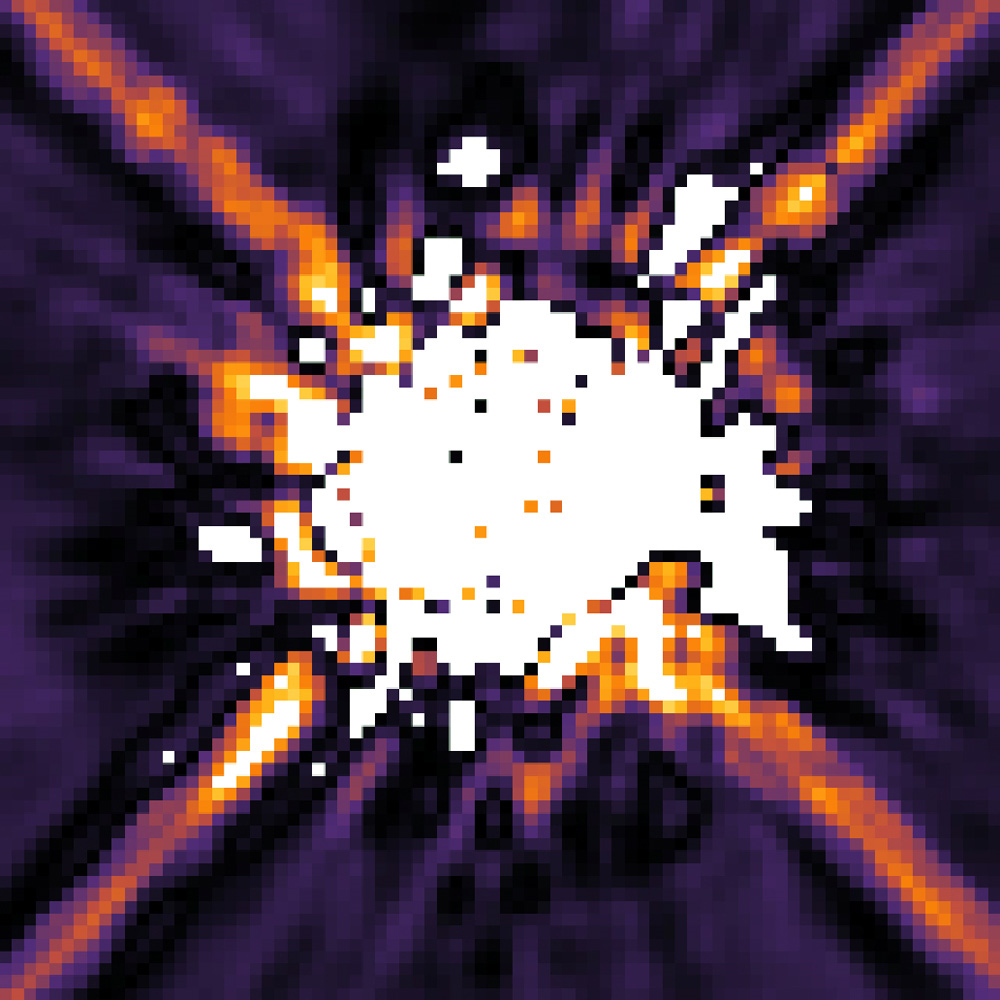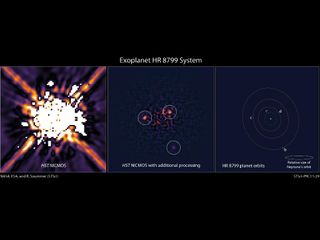Hidden Alien Planets Revealed in Old Hubble Telescope Data

AUSTIN, Texas — When a team of researchers sifted through old data from the Hubble Space Telescope and discovered two hidden alien planets that had gone unnoticed for 13 years, they inadvertently found a new way to seek out alien worlds.
Now, astronomers are expanding their search by applying the data-mining technique to 350 other stars that were observed in 1998 by a Hubble telescope instrument called the Near Infrared Camera and Multi-Object Spectrometer (NICMOS).
"We're only going to look at archive data — only what there is in the NICMOS data," said Remi Soummer, of the Space Telescope Science Institute in Baltimore, Md. Soummer was a member of the research team that found visual evidence in the old Hubble data of the alien planets around the star HR 8799.
Soummer presented the technique and the exoplanet findings Monday (Jan. 9) here at the 219th meeting of the American Astronomical Society.
But despite their success in examining the HR 8799 system, Soummer is hesitant to predict what else the NICMOS data could yield. [Most Amazing Hubble Discoveries]
"I really hope we find something, but I don't want to say any numbers," Soummer told SPACE.com. "Finding planets is really hard. I hope at least one new system exists there, but it's unlikely that we're going to find many."

In the HR 8799 system, there are four known planets circling the parent star, which is approximately 130 light-years away from Earth.
Get the Space.com Newsletter
Breaking space news, the latest updates on rocket launches, skywatching events and more!
Using the archival data from Hubble, Soummer and his colleagues were able to find all three of HR 8799's outer planets. The fourth and innermost planet was not detected by Hubble's NICMOS instrument because it was blocked by light from the star, the researchers said.
The three outer planets in the system are large and have very long orbits, taking 100, 200 and 400 years to circle the star. This means that astronomers would have long waits to observe the orbital motion of these planets. But, one of the main advantages of the NICMOS data is that it already provides scientists with a decade of data at their disposal.
"Basically, we have 10 years of science that we can get immediately," Soummer said. "It's a snapshot of planets, and all the data is already there. It's free and it's available."
The exoplanets around HR 8799 went undetected in 1998 when Hubble first took the images because planet-hunting methods were not available at the time. Now, sophisticated planet-hunting techniques are employed by a variety of space- and ground-based observatories, and the Hubble archives could play an important role.
"Say we discover a new planet in one of these images, all of these images are old, but they can be confirmed by observatories like Keck," Soummer said. "Then, we potentially have information about orbital motion."
You can follow SPACE.com staff writer Denise Chow on Twitter @denisechow. Follow SPACE.com for the latest in space science and exploration news on Twitter @Spacedotcom and on Facebook.
Join our Space Forums to keep talking space on the latest missions, night sky and more! And if you have a news tip, correction or comment, let us know at: community@space.com.

Denise Chow is a former Space.com staff writer who then worked as assistant managing editor at Live Science before moving to NBC News as a science reporter, where she focuses on general science and climate change. She spent two years with Space.com, writing about rocket launches and covering NASA's final three space shuttle missions, before joining the Live Science team in 2013. A Canadian transplant, Denise has a bachelor's degree from the University of Toronto, and a master's degree in journalism from New York University. At NBC News, Denise covers general science and climate change.












